-

- Sopto Home
-

- Special Topic
-

- Multiplexer Knowledge
-

- CWDM DWDM Mux DeMux Setup Part 2
Multiplexer Knowledge
- Why is Multiplexing Needed in Data Communication Systems?
- What is Concept of Multiplexing in Telephone System?
- What is Digital TV Frequency?
- Outlook of the WDM Networks
- DWDM Technical Overview
- CWDM Technical Overview
- How to Activate Cable Modems?
- How to Install a Fiber Optic Modem?
- How do I Choose a Best Fiber Modem?
SOPTO Special Topic
Certificate



Guarantee
Except products belongs to Bargain Shop section, all products are warranted by SOPTO only to purchasers for resale or for use in business or original equipment manufacturer, against defects in workmanship or materials under normal use (consumables, normal tear and wear excluded) for one year after date of purchase from SOPTO, unless otherwise stated...
Return Policies
Defective products will be accepted for exchange, at our discretion, within 14 days from receipt. Buyer might be requested to return the defective products to SOPTO for verification or authorized service location, as SOPTO designated, shipping costs prepaid. .....
Applications
Multiplexers can be used to connect PBX, Hot line and other devices of network from central site to user site through fiber optical cable.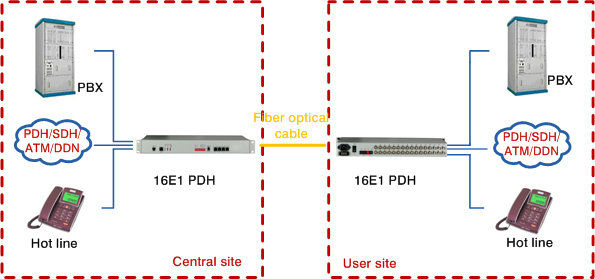
SOPTO Products
- Fiber Optic Transceiver Module
- High Speed Cable
- Fiber Optical Cable
- Fiber Optical Patch Cords
- Splitter CWDM DWDM
- PON Solution
- FTTH Box ODF Closure
- PCI-E Network Card
- Network Cables
- Fiber Optical Adapter
- Fiber Optical Attenuator
- Fiber Media Converter
- PDH Multiplexers
- Protocol Converter
- Digital Video Multiplexer
- Fiber Optical Tools
- Compatible
Related Products
Performance Feature
High integration desig
Low power consumption
Good EMC, EMI
Stable and Reliable
Multiplexer Knowledge
Recommended
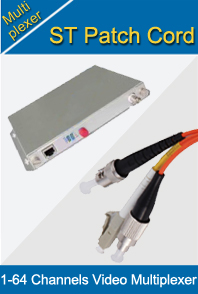
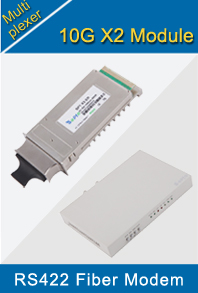
CWDM DWDM Mux DeMux Setup Part 2
Our product line includes a variety of passive Optical Add/Drop Multiplexers. An optical add-drop multiplexer (OADM) is a device used in wavelength-division multiplexing (WDM) systems for multiplexing and routing different channels into or out of a single mode fiber (SMF). "Add" and "drop" refer to the capability of the device to add one or more new wavelength channels to an existing multi-wavelength WDM signal, and/or drop (remove) one or more channels, passing those signals to another network path.
The figure 1 below shows how a typical 1-channel CWDM, or DWDM, OADM setup operates. In this example, the optical add-drop multiplexer (OADM) is dropping OR adding one CWDM or DWDM channel, passing those signals to each individual terminal. This is considered the OADM “Add or Drop” setup.
As shown, those CWDM or DWDM channels not dropped continue to pass through to the next OADM, until each channel is eventually dropped. Conversely, each OADM is adding a channel in the opposite direction. This setup would not require a Demux. In this example, each terminal is independent of one another, but each terminals’ network is accessed at a central station. This setup works well for a small office building where separate unrelated businesses access the network.
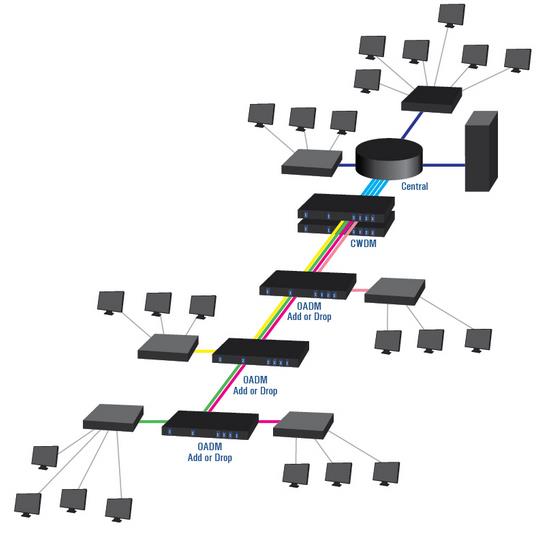
Figure 1: Typical 1-Channel CWDM, or DWDM, OADM Setup
The figure 2 below shows how a typical 2, 4 and 8-channel CWDM or DWDM OADM setup operates. This is considered the OADM Ring. In Figure 4 below, the optical add-drop multiplexer (OADM) is dropping AND adding one or more channels. Each terminal has access to one or more channels, but unlike the Add or Drop” setup, all channels pass through each other terminal. In the OADM Ring, each terminal has the ability to connect to each other terminal. This setup requires a Demux at the end of the ring. The Central Station has access to all channels. This setup works well for a school or business campus where separate, but related entities access the network.
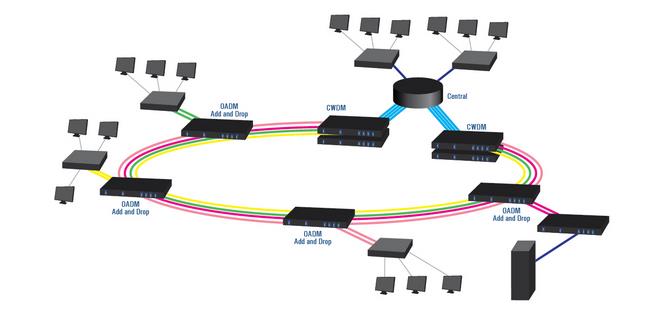
Figre2 Typical 2, 4 and 8-Channel CWDM or DWDM OADM Setup
Our 1-Channel OADM allows you to add or drop one channel. The remaining wavelengths are passed through the OADM. The 2-Channel, 4-Channel CWDM or DWDM, and 8-Channel DWDM OADM allow you to add and/or drop one, two, four or eight channels (with different wavelengths) into one direction of an optical ring. The other wavelengths are passed through the OADM through the dual single-mode fiber.
For purchasing more high quality mux demux products with low cost or for more products’ information, please contact a Sopto representative by calling 86-755-36946668, or by sending an email to info@sopto.com.



